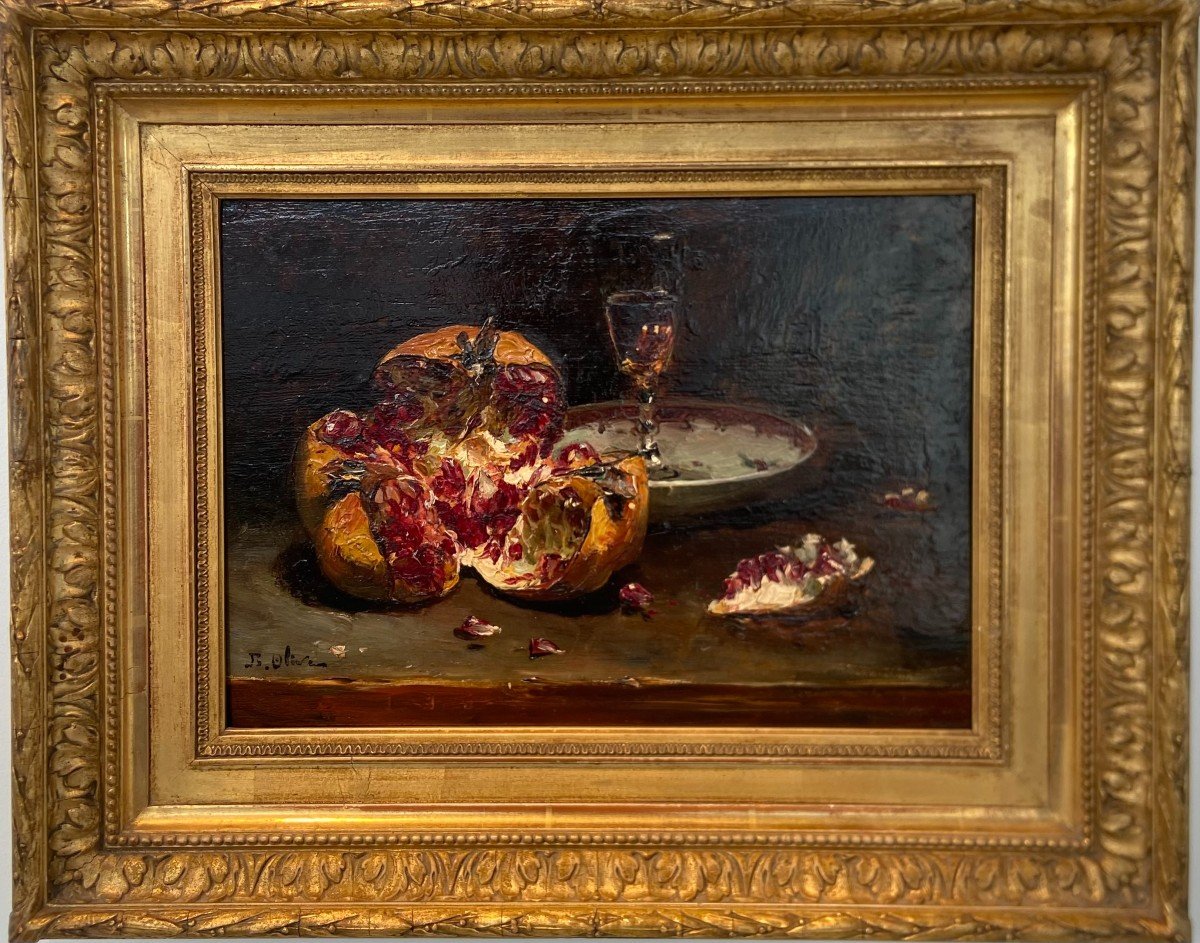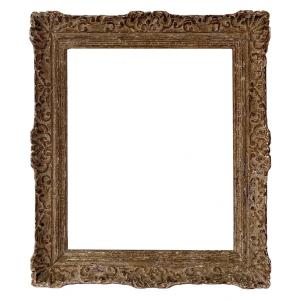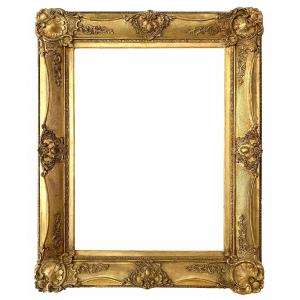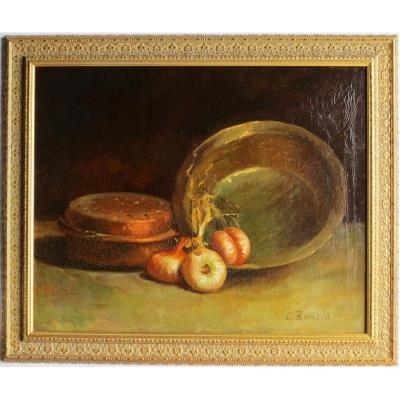Jean-Baptiste OLIVE (1848 - 1936)
Still life with pomegranates
Oil on panel signed lower left
23 x 32 cm
Origin :
Private collection, South of France
Jean-Baptiste OLIVE (1848 - 1936)
Jean-Baptiste Olive is one of the best-known and most appreciated names among lovers and collectors of Provençal painting.
Born in 1848, into a family of modest wine merchants in the Panier district, where painting was not considered a profession, the young man was nevertheless allowed to undertake to be a house painter and join the workshop of a decorative painter. Etienne Cornellier, who employed him, encouraged him to enroll at the Ecole des Beaux-Arts in Marseille. Together, the two artists then left the Phocaean city for Paris and from the end of the 19th century, the painter rubbed shoulders in the capital with the artistic upheavals of his time, those of impressionism, fauvism, cubism and abstraction in particular.
Jean-Baptiste Olive, however, seems to be completely impervious to them. Throughout his career, his painting expresses the warmth and sensuality of the Mediterranean coasts. In Paris, Olive painted Marseille and the South of France. Far from the extravagances of fauvism and cubism, he devoted himself more readily to the observation and assured expression of the effects of light on water. It was his "library", a documentation made up of sketches taken on the spot and on different supports, in particular small wooden panels, which allowed the artist to produce numerous Mediterranean views from his Parisian studio. In reality, he never left his hometown where he kept a pied-à-terre for regular stays. In his works with rigorous compositions and sometimes bold framing in the style of a photographer, Jean-Baptiste Olive paints the burning sun at the end of the day and buries the rocky massifs. For him, the entrance to the Old Port of Marseille where boats, fishermen, and urban life bustle is a permanent spectacle and an inexhaustible source of inspiration.
During his lifetime, the painter was entrusted with prestigious commissions, including the decor of the restaurant Le Train Bleu and the ticket hall of the Gare de Lyon. His clients are loyal and the account books are well filled. Olive won the Léon Bonnat Prize in 1930.
A major retrospective of nearly eighty-two works was organized at the Cantini Museum in Marseille in 1948, then another at the Regards de Provence Museum in 2008. Works by the painter can now be found in the collections of the MuMa in Le Havre, the Musée des Beaux-Arts in Marseille, the Musée d'Orsay, the Fondation Regards de Provence and the Cantini Museum in Marseille.

































 Le Magazine de PROANTIC
Le Magazine de PROANTIC TRÉSORS Magazine
TRÉSORS Magazine Rivista Artiquariato
Rivista Artiquariato